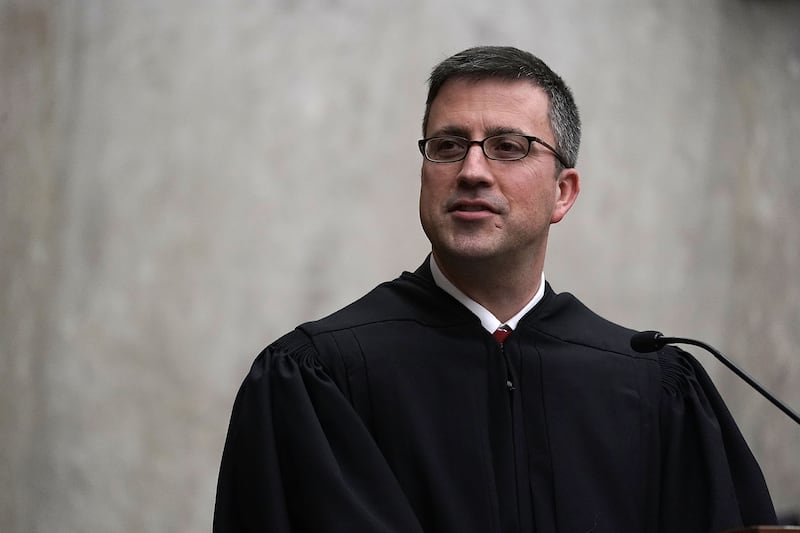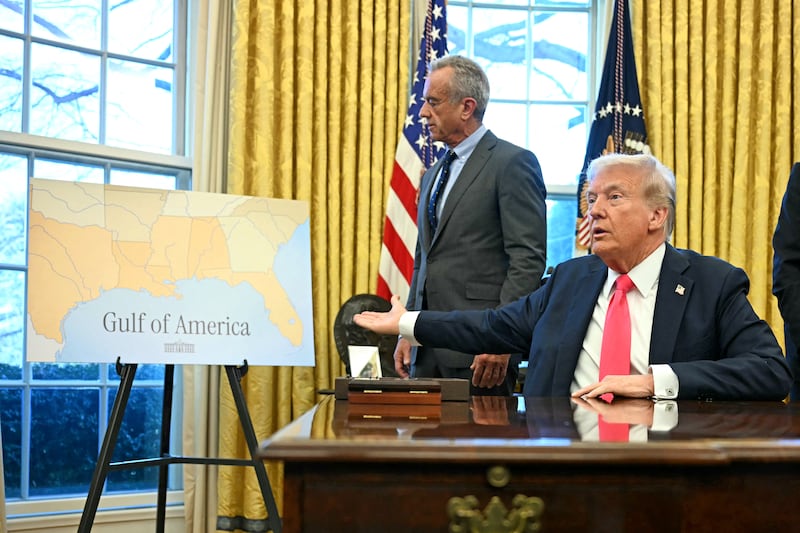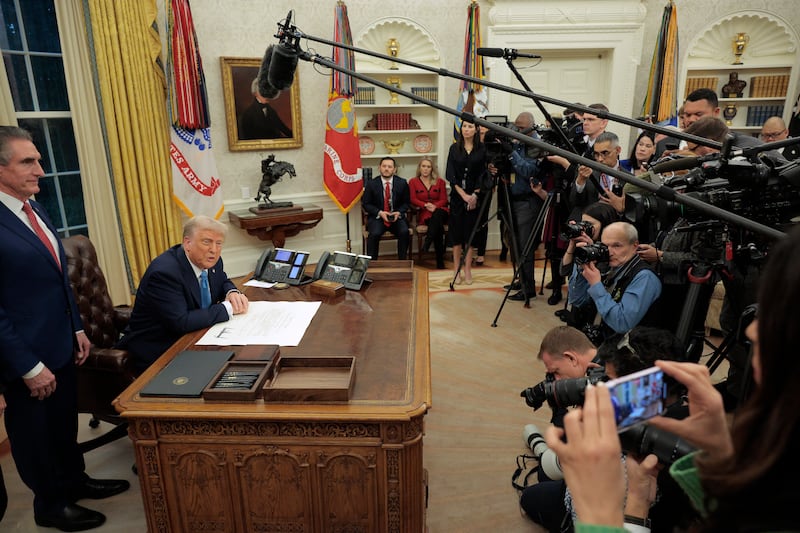The Associated Press must have its full access to President Donald Trump’s White House restored, a judge ruled on Tuesday.
Judge Trevor McFadden, who was appointed by Trump in 2017, ruled that the White House could not ban select journalists from events solely because of the viewpoints they express. He ordered the White House to lift the ban immediately.
“The Court simply holds that under the First Amendment, if the Government opens its doors to some journalists—be it to the Oval Office, the East Room, or elsewhere—it cannot then shut those doors to other journalists because of their viewpoints,” McFadden wrote. “The Constitution requires no less.”
The case marks a rare instance of Trump losing to a media outlet in court since his election.
McFadden wrote that his order should go into effect on April 13—part of a bid to give the government “time to seek an emergency stay from a higher court and to prepare to implement the Court’s injunction.”
The Department of Justice appealed the order on Wednesday to the federal appeals court in D.C.
Trump has tried to force scores of media outlets—including ABC, CBS, and the Des Moines Register—into courtrooms over coverage decisions he disagreed with.
ABC settled a defamation suit with Trump in December, donating $15 million to his presidential library as part of the agreement. CBS and Trump have agreed to mediation in his $20 billion lawsuit against the network over a 60 Minutes interview with former Vice President Kamala Harris.

McFadden also said the White House could restrict which reporters and outlets cover the administration, but it couldn’t do so based on an outlet’s “viewpoints”—something he said the White House has done “brazen[ly].”
“While the AP does not have a constitutional right to enter the Oval Office, it does have a right to not be excluded because of its viewpoint. And the AP says that is exactly what is happening,” he wrote. “The Court agrees.”
Tuesday’s ruling came less than two weeks after the AP squared off in court against the White House over its months-long ban. The White House blocked the news wire from White House events, its controlled press pool, the Oval Office, and Air Force One over the outlet’s decision to use “Gulf of Mexico” rather than “Gulf of America,” as Trump prefers.
The AP said it had to appeal to its global audience with the name, and it reported on Trump’s executive order to change the name to the “Gulf of America.”

“We are gratified by the court’s decision. Today’s ruling affirms the fundamental right of the press and public to speak freely without government retaliation,” AP spokeswoman Lauren Easton said.
“This is a freedom guaranteed for all Americans in the U.S. Constitution. We look forward to continuing to provide factual, nonpartisan and independent coverage of the White House for billions of people around the world.”
The White House did not respond to an immediate request for comment.
At a hearing last month, the AP’s chief Washington photographer, Evan Vucci, told McFadden that the White House’s efforts were damaging its ability to cover Trump and his administration competitively. “We’re basically dead in the water on major news stories,” he said.
The efforts have forced the organization to come up with creative ways of covering an administration prone to retaliating against enemies, media and otherwise.
Its reporters continue to reserve spots at White House events, though they are continuously turned away, according to The Washington Post. It has also relied on some of its foreign-based correspondents to filter into events as its White House-based team is excluded.

Its photographers have had to stand apart from others as they try to capture Trump, leading to one widely circulated image of Trump reading the New York Post‘s coverage of his sweeping tariff plan from the inside of his presidential car, “The Beast.”
In court, the AP argued the White House had no process for determining which outlets get to cover Trump and that it has arbitrarily excluded the AP.
“There’s no rhyme or reason,” said Vucci, the reporter who took the famed photo of a defiant Trump raising his fist after last summer’s assassination attempt. “I don’t think anyone knows.”
The White House has argued that the AP has allowed its stylebook, which is used by most major news organizations worldwide for reference languages on topics, to be weaponized in biased ways.
It has allowed the AP, Wiles told AP executive editor Julie Pace in a letter in February, “to push a partisan worldview in contrast with the traditional and deeply held beliefs of many Americans and many people around the world.”
The post Trump-Appointed Judge Defies Him on AP’s White House Access appeared first on The Daily Beast.




